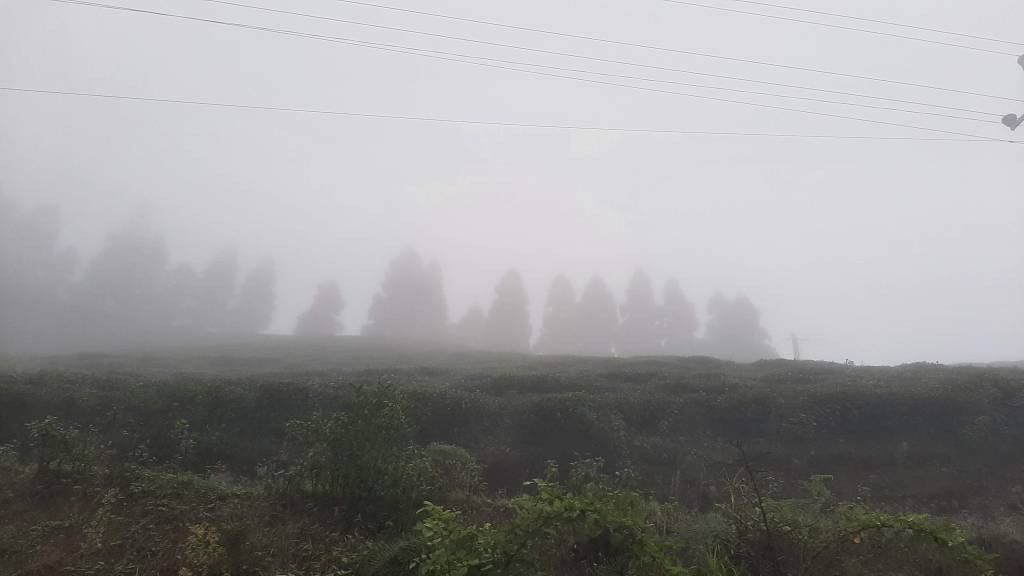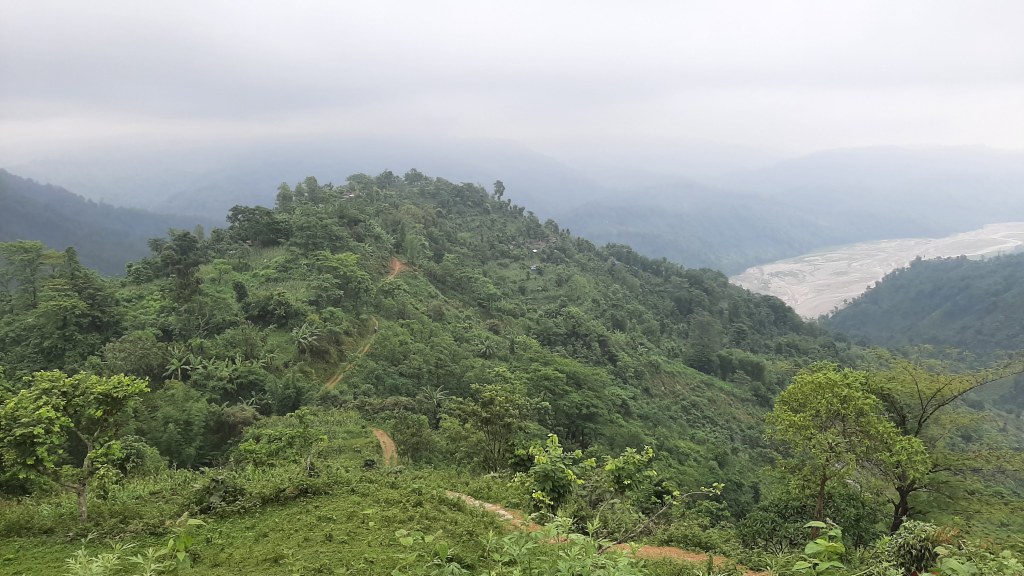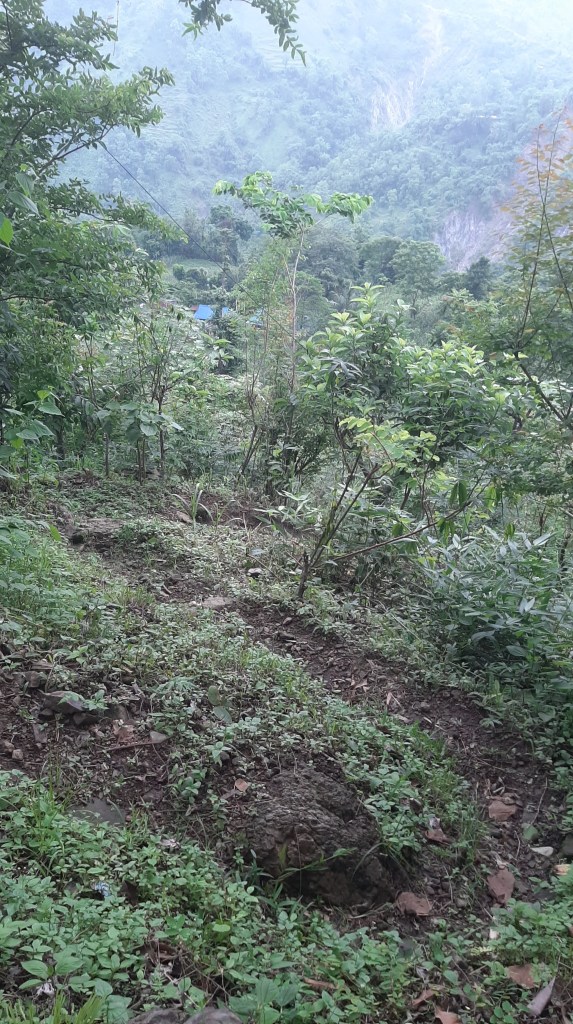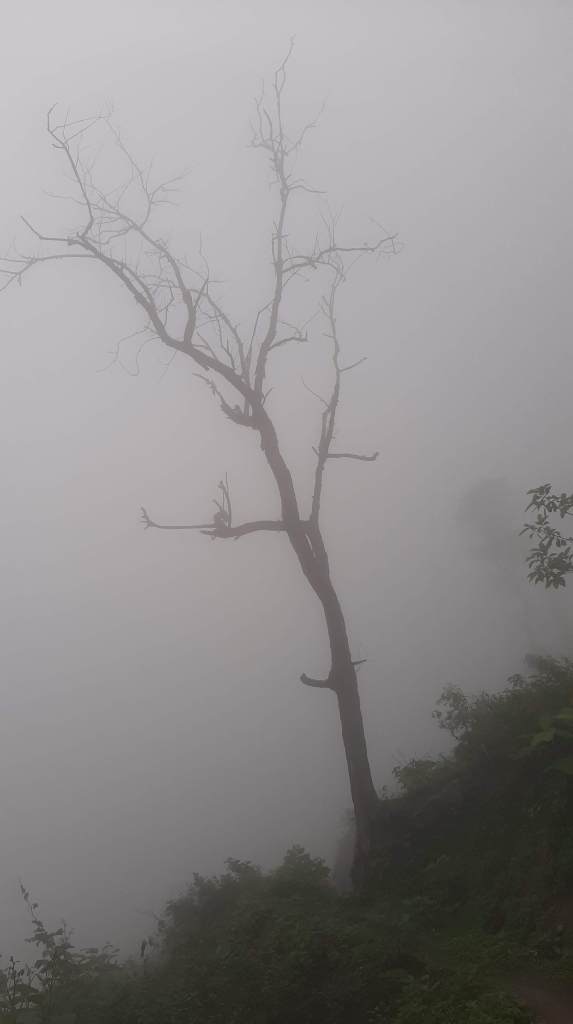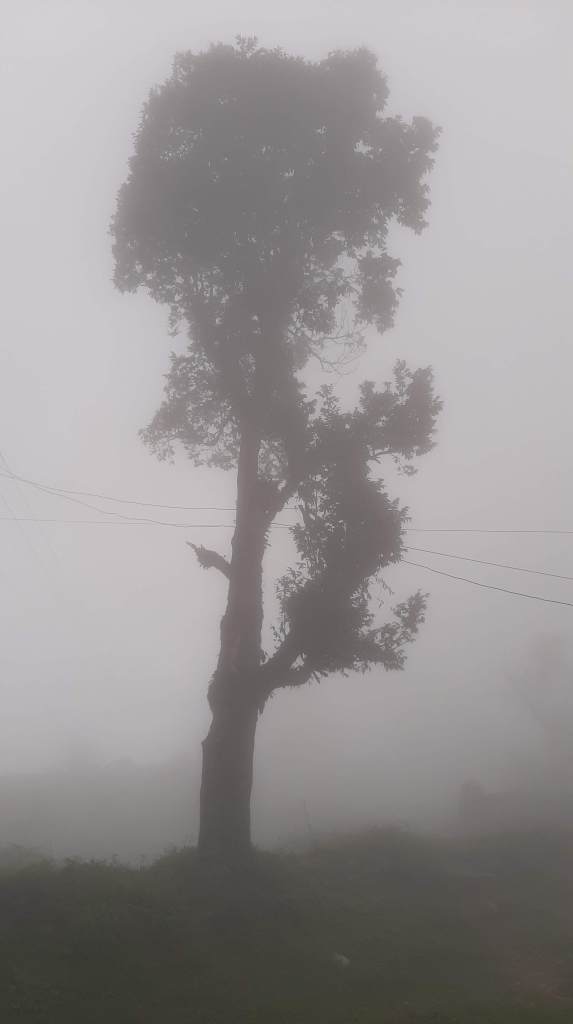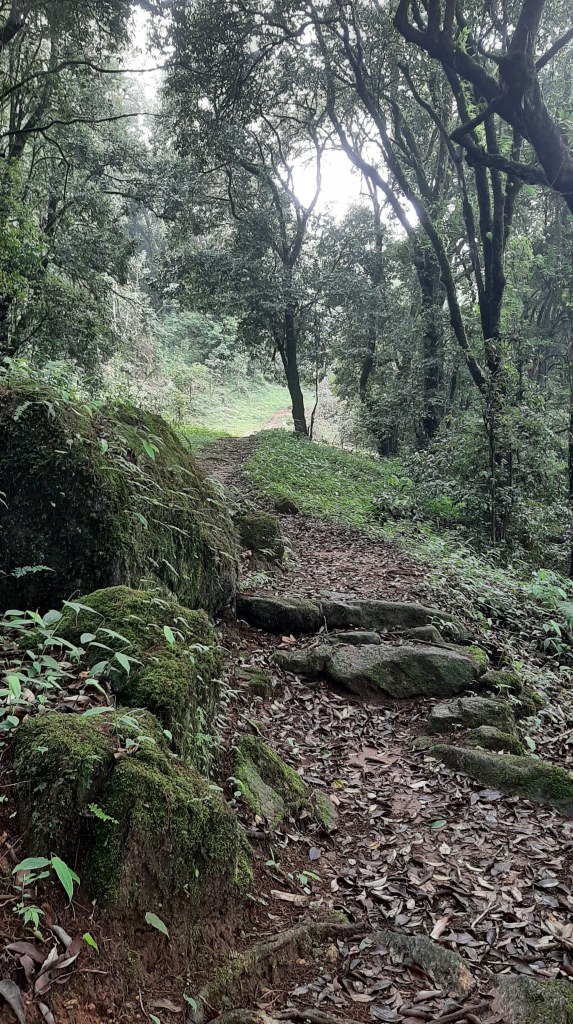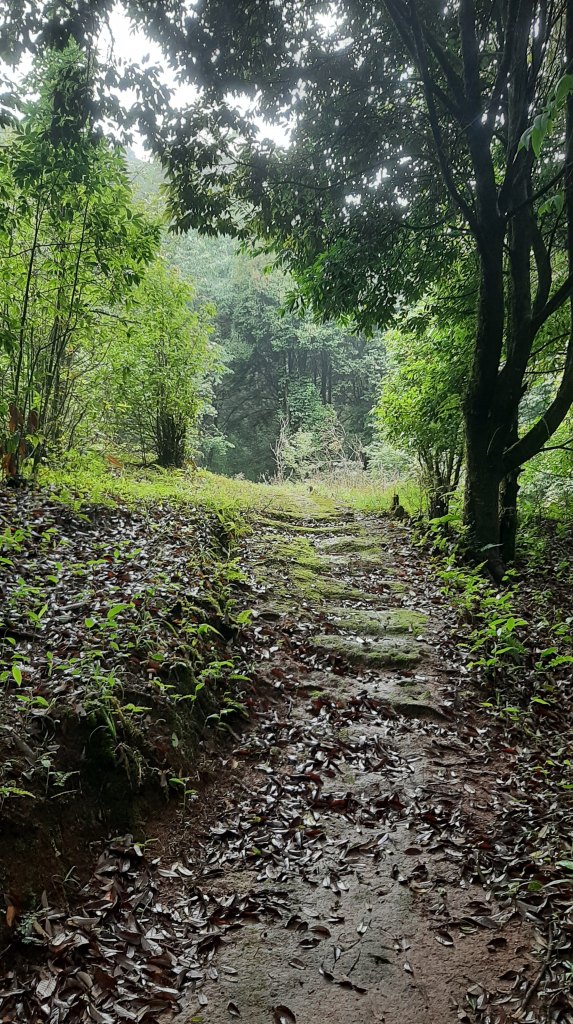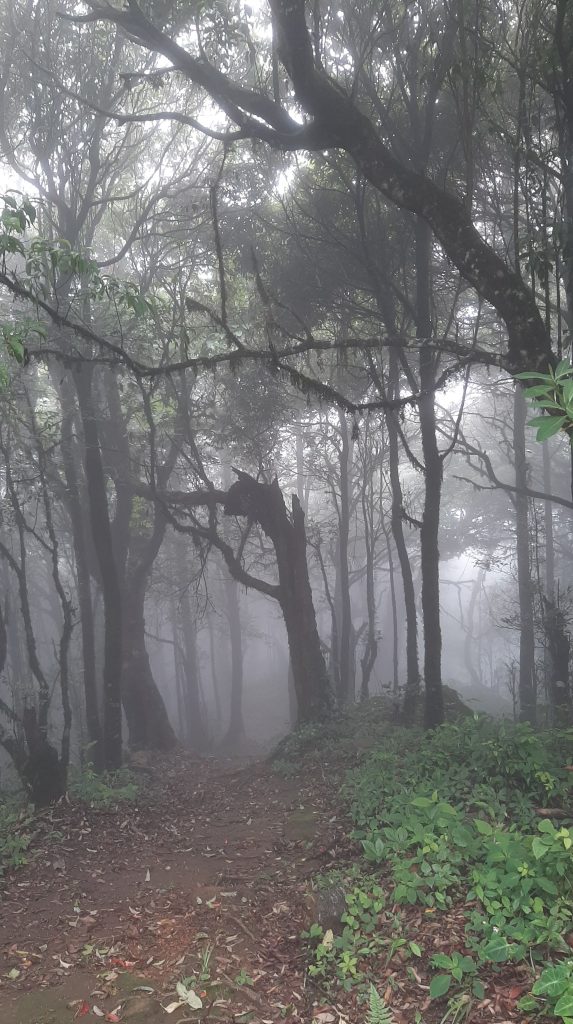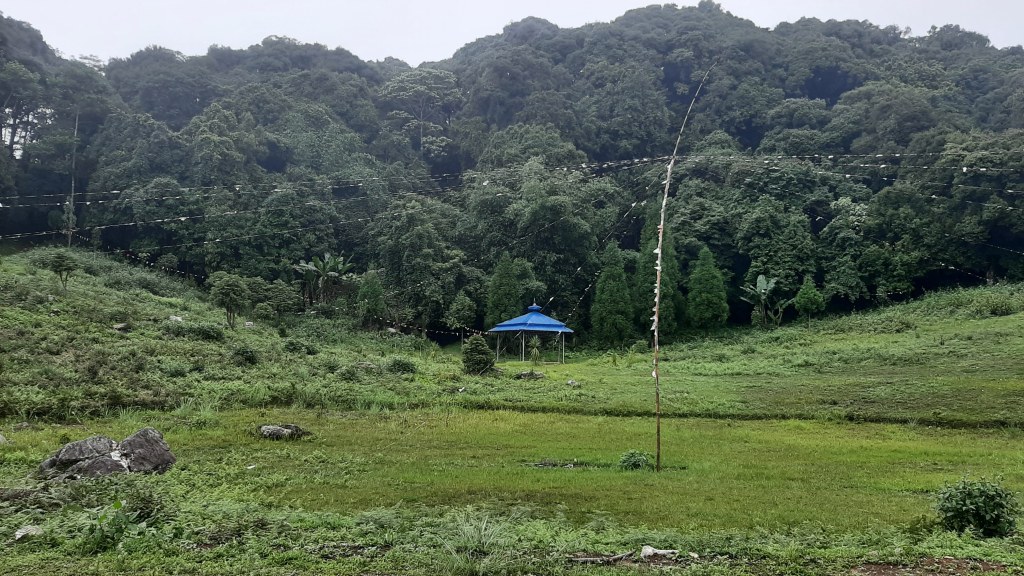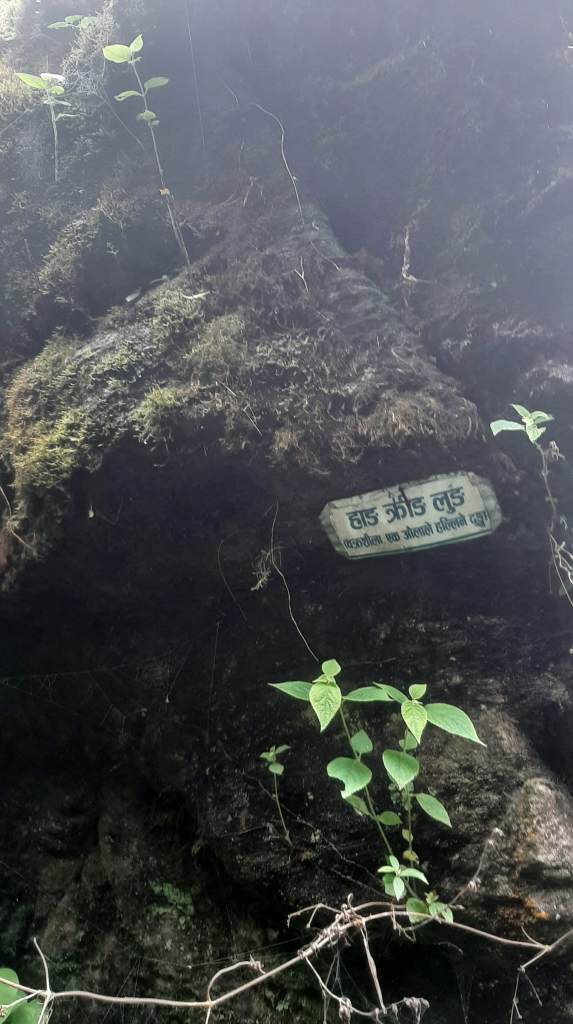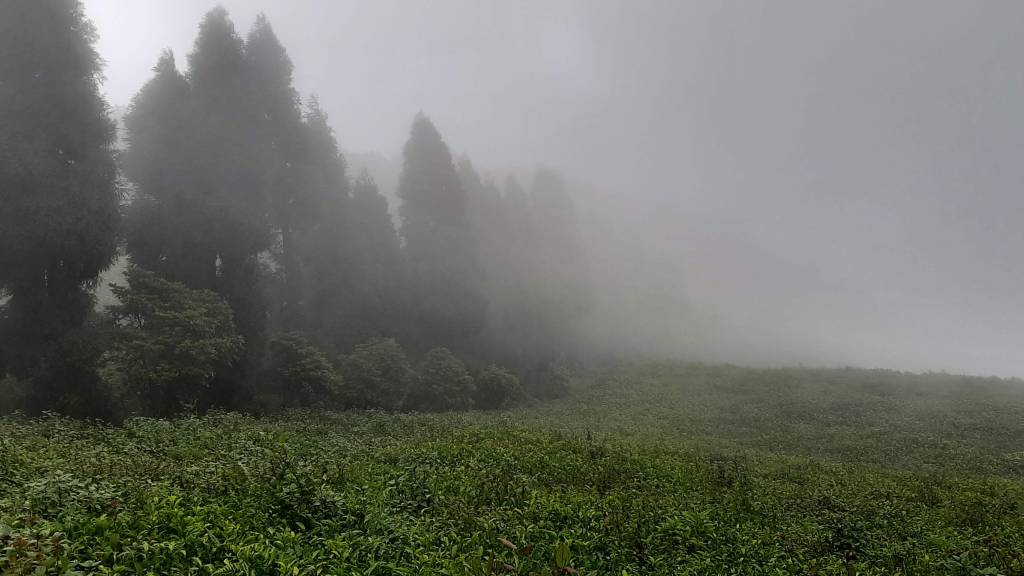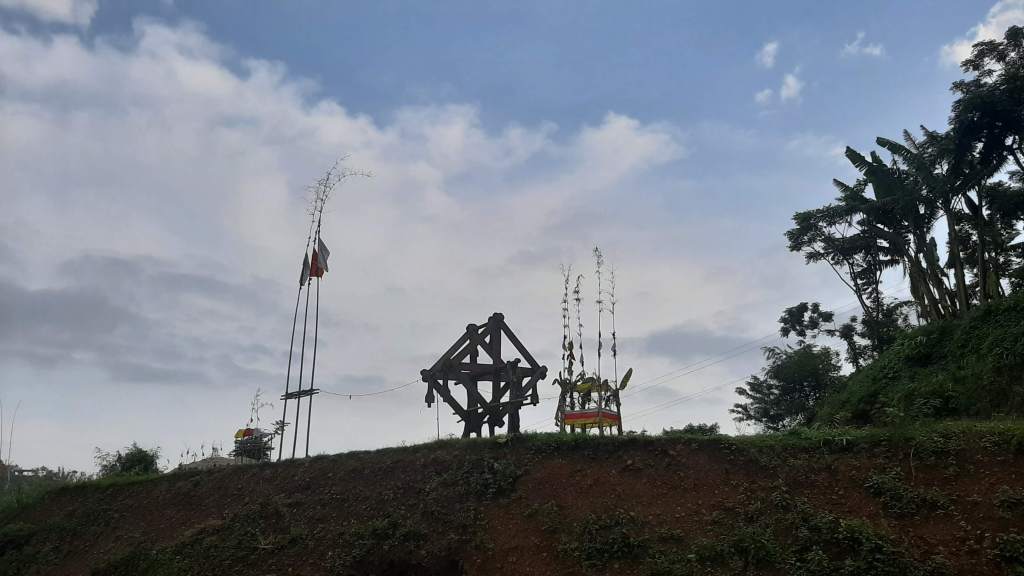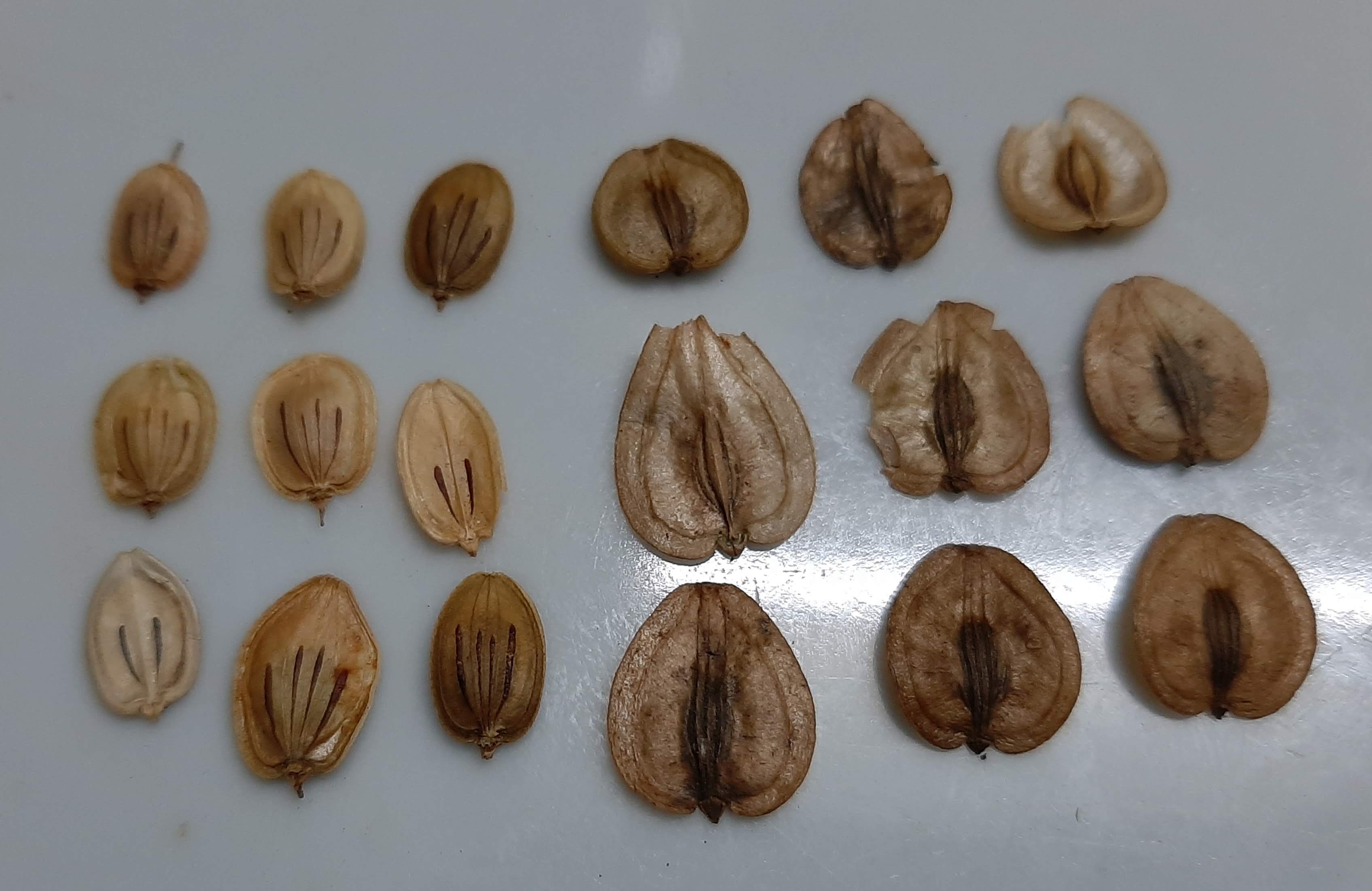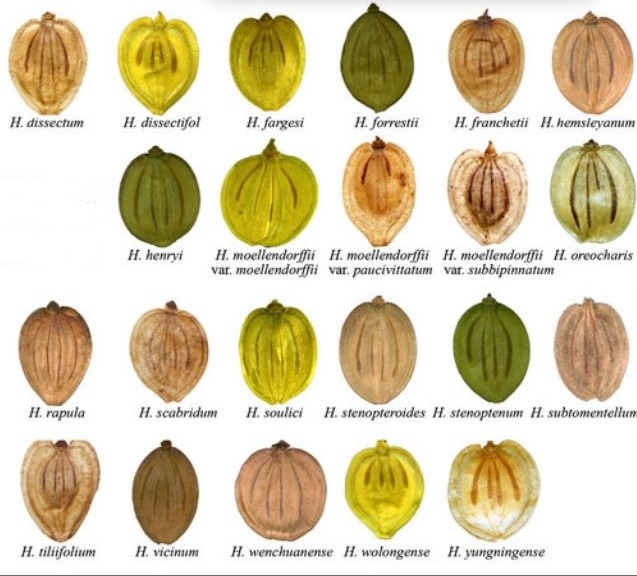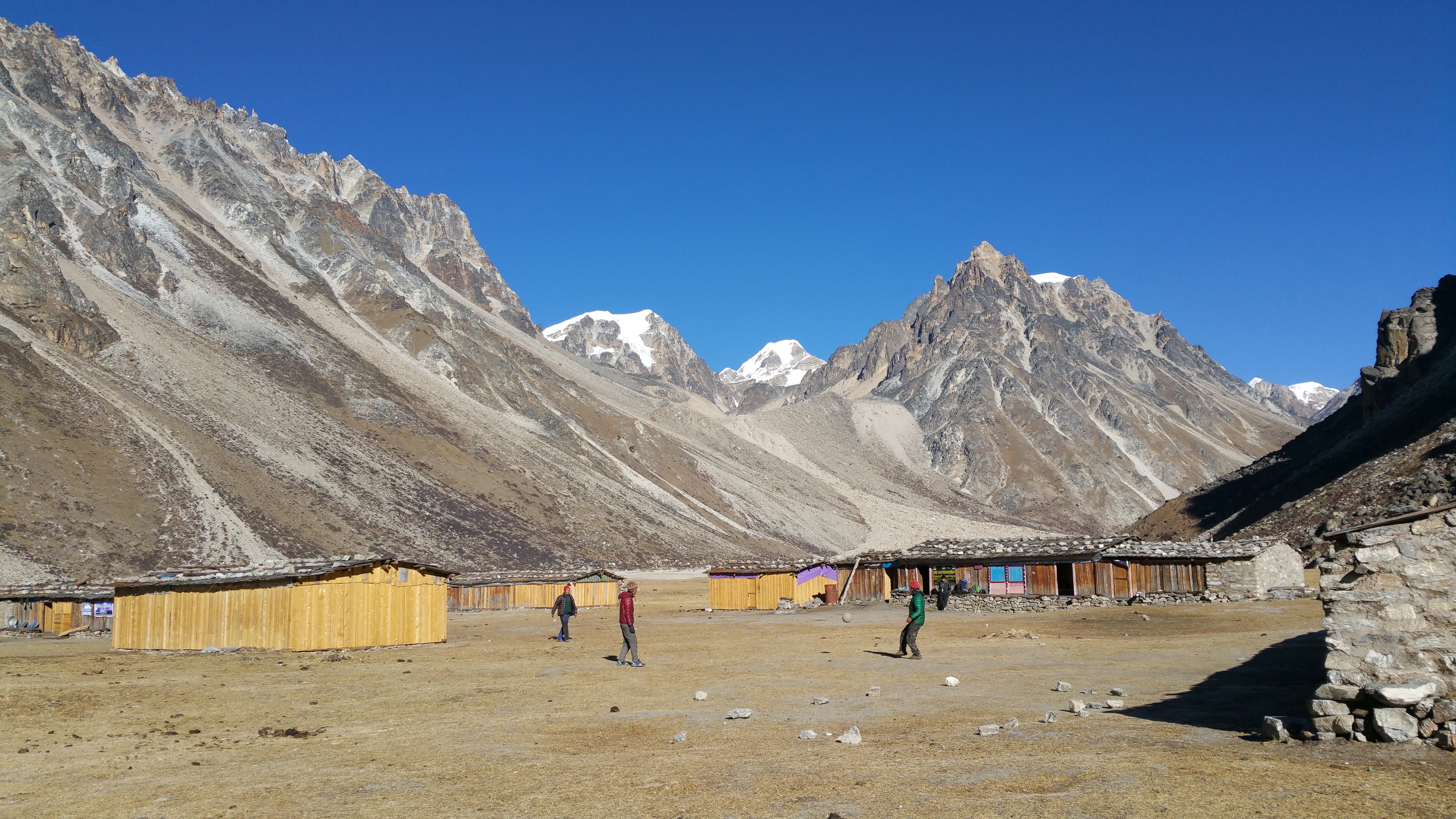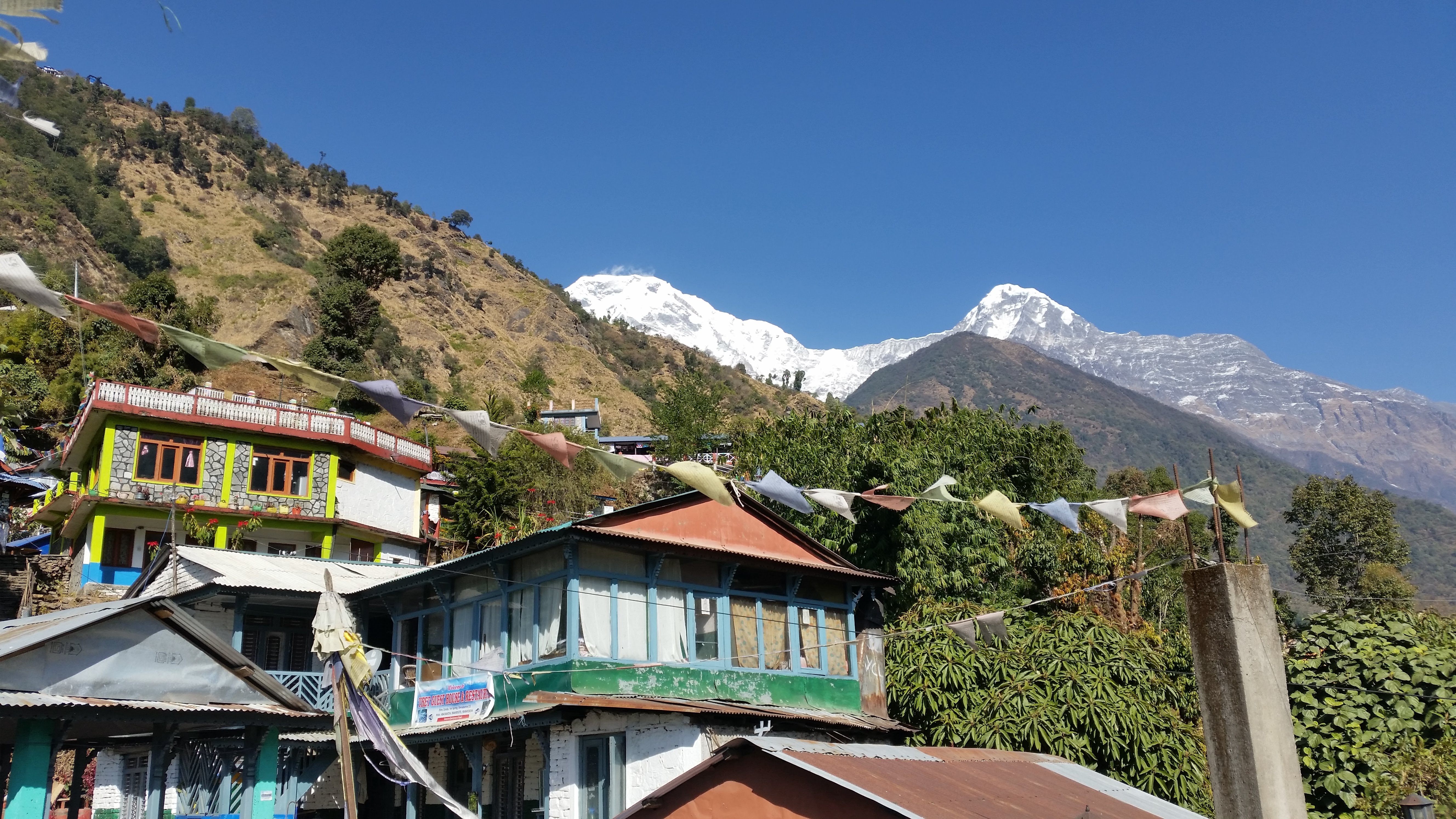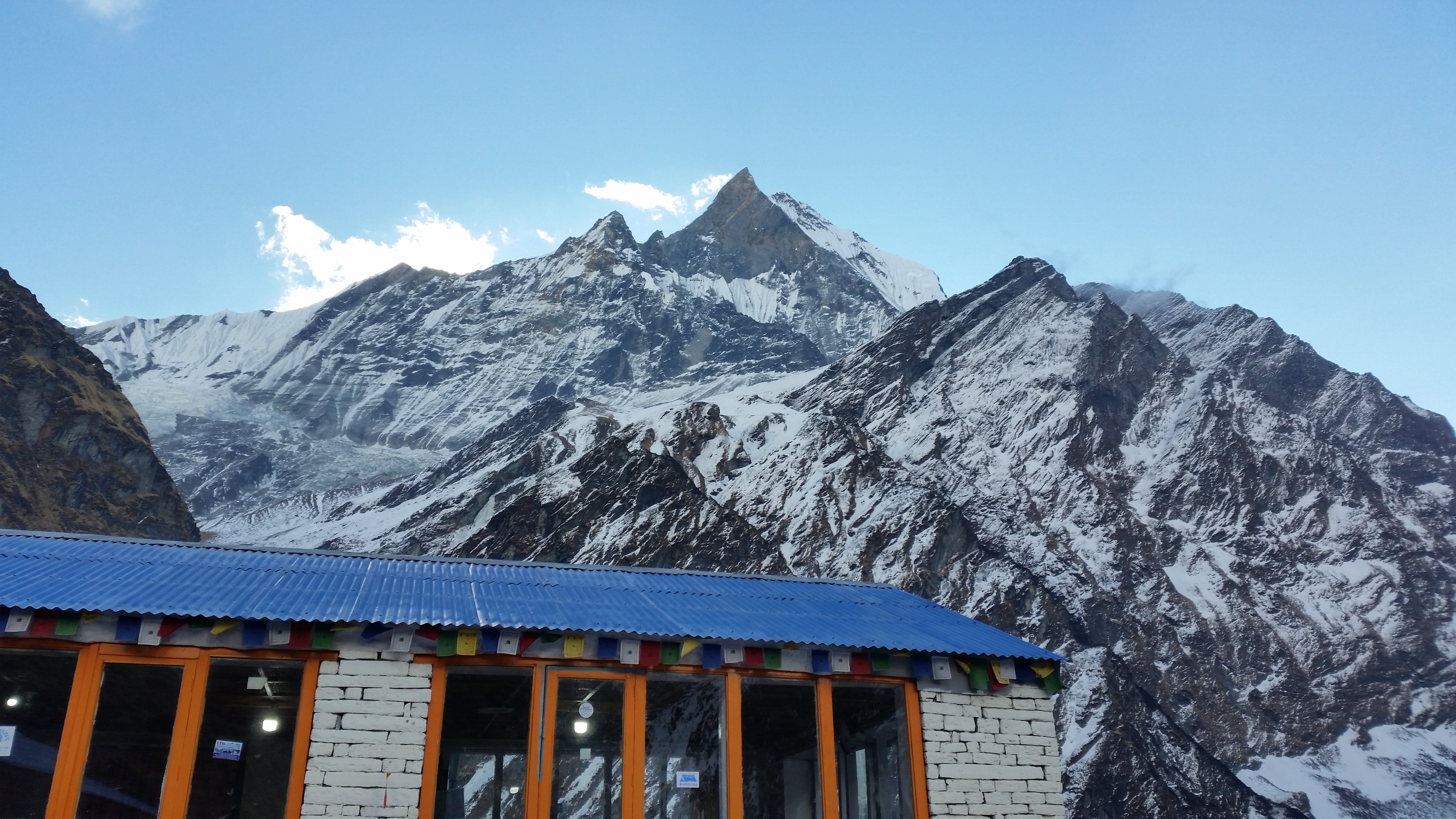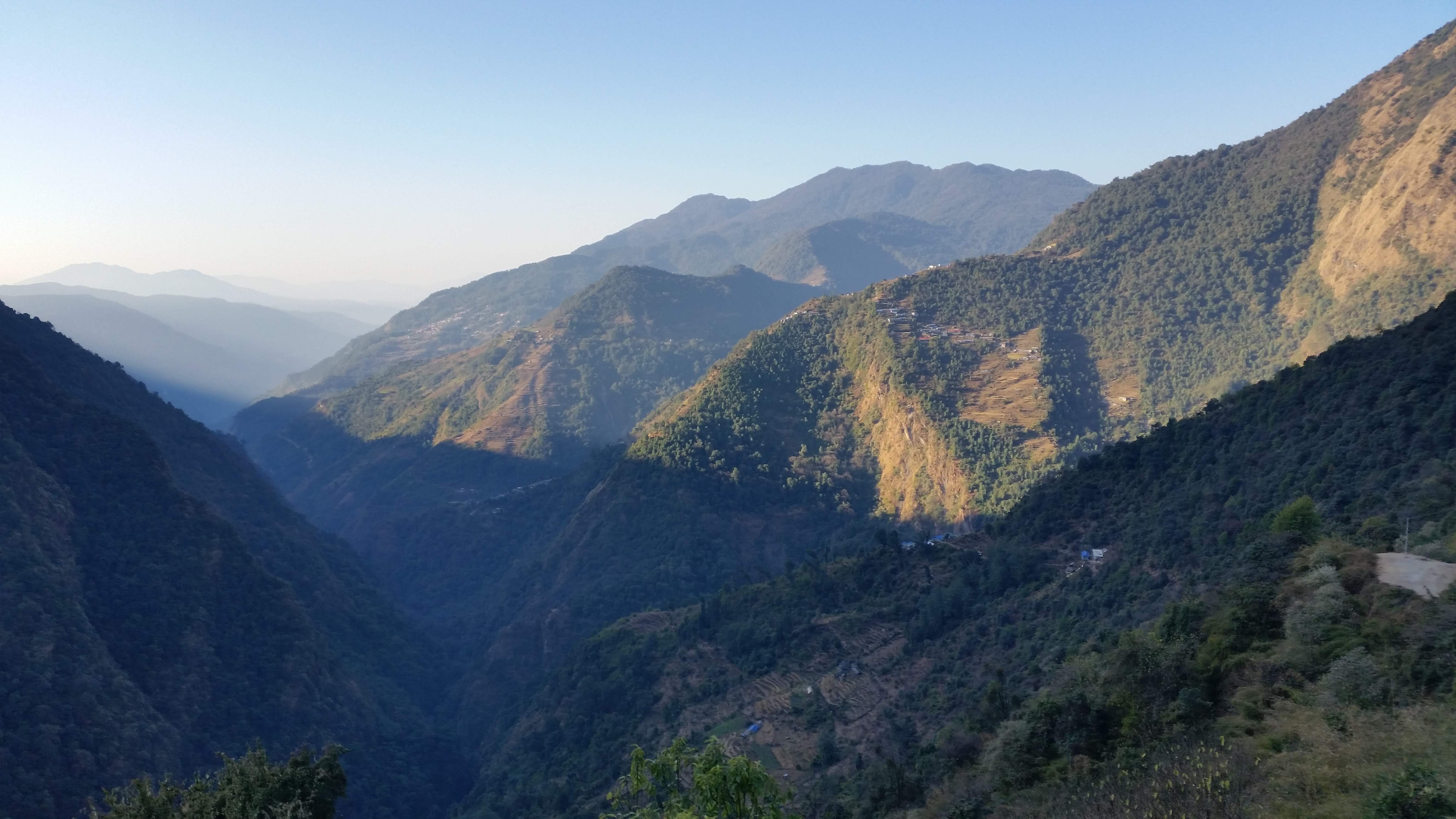“Life begins at the end of your comfort zone”, Neale Donald Walsch.
जीवनका सबै यात्राहरु सम्झन लायक हुँदैनन् तर कुनै कुनै यात्रा मानसपटलमा यस्तरी थाक लागेर कलेटी परेर बस्छ की ती यात्राका पलहरुले सदैव रोमाञ्चित बनाउने गर्दछ। शान्त सलल बग्ने खोलाले न त बालुवा नै थुपार्दछ न त पथ फेर्न नै सक्छ तर गडगडाएर लछार पछार गर्दै वग्ने खोलाले शिरको बालुवा दोभानसम्म पुर्याउने र नयाँ पथ पहिल्याउन सक्ने क्षमता राख्दछ।त्यसै गरी यात्रा यादगार हुनुमा यात्रासँग जोडीएका थुप्रै घटनाहरुको अहम् भूमिका रहन्छ।त्यसै गरी कुनै कुनै यात्राले जीवनमा अमूल्य पाठ समेत सिकाउदछ।
दिन ५:
माङ्सेवुङ्गबाट फर्के पछिका दुई विकल्प; शुक्रबार विहानैको पहिलो उडान लिएर काठमाडौँ फर्कने र साँझको मा.वि.को साथीहरुसँगको जमघटमा सहभागी हुने वा फोर ह्विल गाडीको व्यवस्था गरेर गुफा पोखरी जाने। धरान पढ्दाको चिनजान एक जना गाउँले भाइ लाजेले दिदी तपाईँलाई गाडी चाहिएमा खबर पाउँ, मेरो गाडी उपलब्ध गराई हाल्छु नी भनेकोले फोन गरेको, एकै वचनमा हुन्छ भने पछि उहाँलाई पनि सँगै जाउँ भनी अनुरोध गरेँ। धेरै पछि दिदी भाइ दुःख शुखको गफ गर्दै जाउँला, उहिले विद्यार्थी हुँदा हिडेको बाटो गाडीमा गुडौँला भने पछि उसको सिलिगुडी जाने कार्यक्रम थाँति राखेर जान मञ्जुर भए।
दिन ६:
विहानै ७ बजे हिड्ने भन्ने कथन मात्रै हुने रछ। आज पनि ७:३० मा मात्र यात्राको शुरु गरियो विराटनगरबाट। धरान पुगे पछि गाडि आफन्तको होटलमा थन्काएर लाजे आफैले उसको गाडी हाँकेर उकालो लागियो। भेडेटारमा विहानको कफी पिउन रोकियौं। उहिले धरान पढ्दा पिकनिक खान जाने गरेको भेडेटारभन्दा थोरै फरक अहिलेको भेडेटार एकछिन क्याफेको झ्यालबाट नियालियो। शरणले पहिले पनि धरान-धनकुटाको लोकल गाडी चलाएकोले उसैलाई हाँक्ने जिम्मेवारी दिएर हामी गफ गर्न थाल्यौं। मूलघाट पुग्ने बेला मैले आफूले सिट पेटी लगाएकी थिएं र शरणलाई पनि सिट पेटी बाँध है भनेकी थिएं। हेलचेक्र्याई गर्नमा हामीलाई कसले उछिन्ने नी। नभन्दै अलि पर पुगेको ट्राफिकहरुले गाडी रोकेर चिट थमाउदै रहेछन्। गाडी रोकी त हाले। ब्लु बूक र लाइसेन्स् नियाली सके पछि ट्राफिकले पुलुक्क गाडीभित्र हेर्यो र शरणलाई सिट पेटी नबाँधेकोमा नाम टिपाउन टहरामा बोलायो। ट्राफिक आएर जानूस् भनेर संकेत गरेसी हामी हिड्यौं। त्यस पछिको यात्राभर शरणले सिट पेटी लगायो।
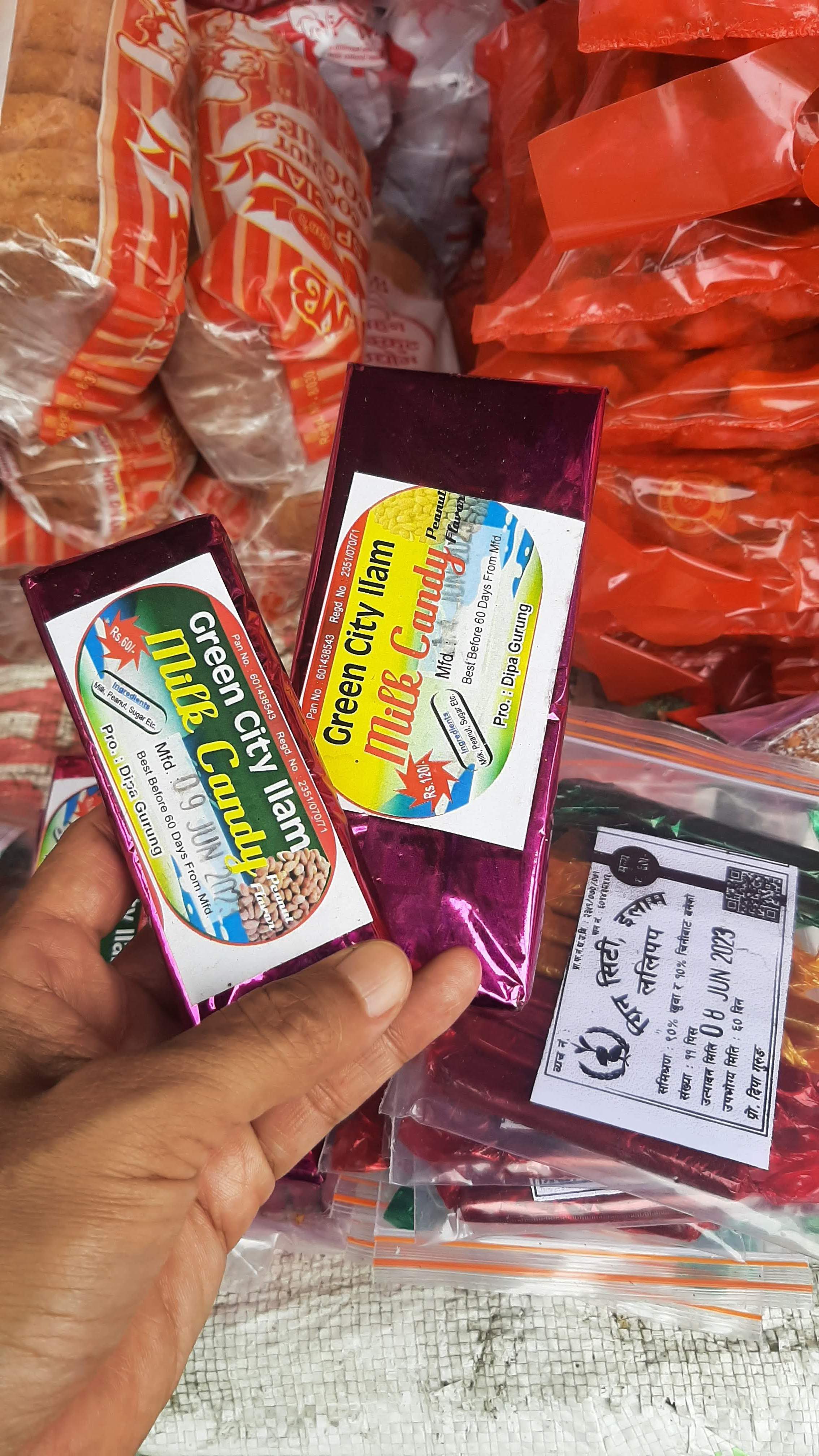
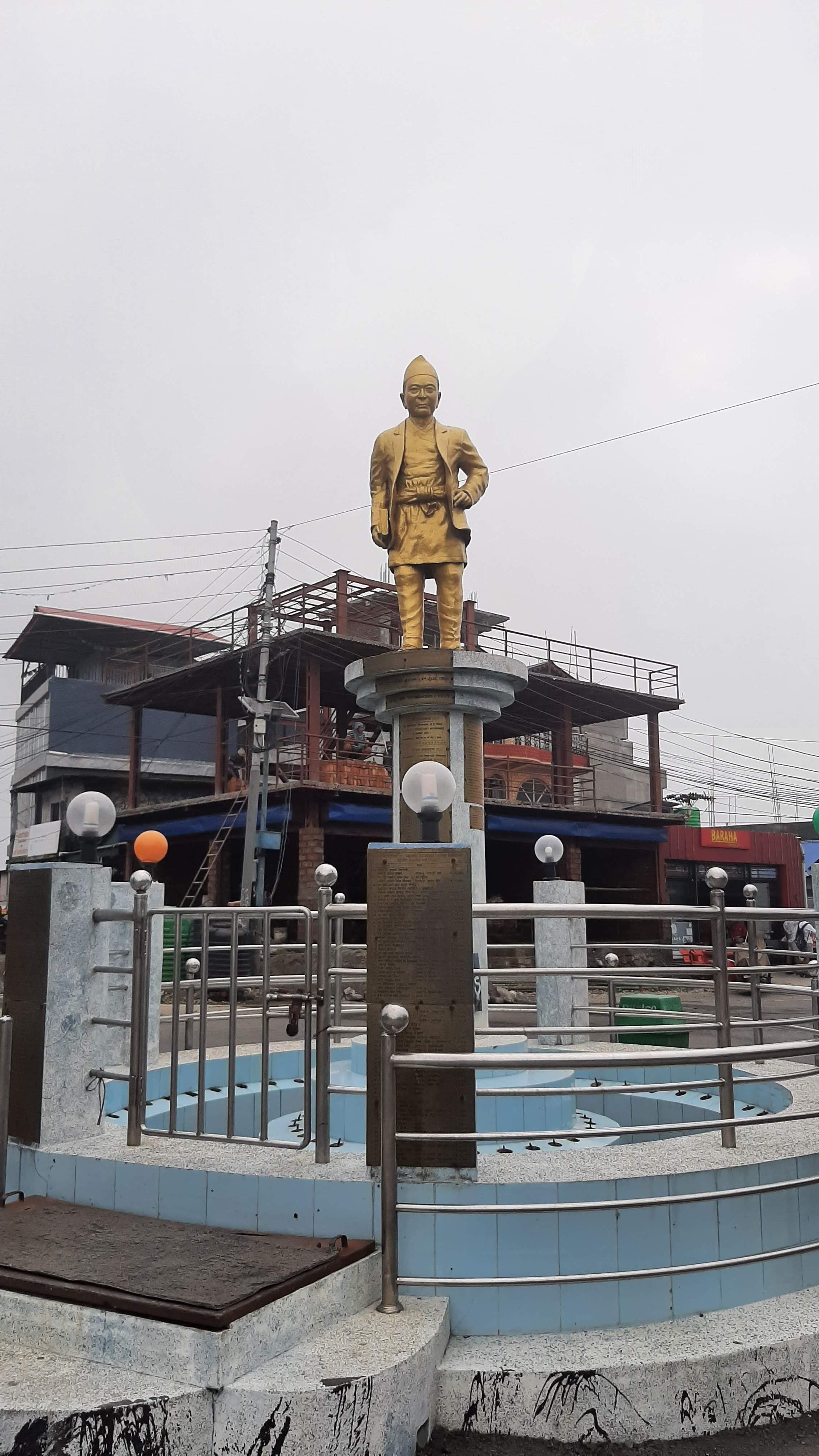
भेडेटारमा नयाँ प्याकेजिङमा इलामेली मिल्क क्याण्डी देख्दा खुशी लाग्यो। लिम्बू इतिहासकार इमान सिंह चेम्जोङको प्रतिमा।
मनसुनी हुस्सुको सप्कोसँग लुकामारी खेल्दै धनकुटा, हिले, सिंदुवा, चित्रै हुँदै बसन्तपूर (१:१५) पुगियो र पहिले खाना खाएकै होटलमा कफी पिउन रोकियौं। होटलका साहु-साहुनी सह्रै मिजासिला भए पछि कहिले काँहीमात्र हिँडे पनि त्यही रोकिन मन पर्ने रहेछ। कफी अर्डर गरेर यसो साहुजीलाई एक लट जिस्काइयोः
मः अस्ति त साहुनी चुलोमा व्यस्त, साहुजी गफ जोत्नमा मस्त; यो पटक त साहुजी चुलोमा व्यस्त हुनुहुँदो रछ।
साहुजीः लोकल कुखुरा काटेको, साथीहरुले तिते (वाचिपा/वाम्यूक) खाने रहर गरेकाले साहुनीलाई पकाउन नआउने भएकोले आफै खट्न परेको हो।
मः जे होस् विशेष खानपान बनाउन पनि खप्पिस हुनुहुँदो रछ।
गफ जोतेर कफी पिउन थाल्यौं। साहुजीले त बटुकोमा वाम्यूक ल्याएर चाख्नुस् है भन्दै जीउ गन्ति सबैलाई दिनु भो।
मः ओहो! पर्दैनथ्यो नी। यो त गफ जोतेर मेजमानी मागे जस्तो पो भो त … 😛
साहुजीः फेरि फेरि यताको यात्रा गर्दा हामी छौं भनेर सम्झनु होला नी।
मक्ख परियो र कफीसँग वाम्यूक खाइयो।
मः साहुजी, गुफा पोखरी गाडी जान्छ?
साहुजीः जान्न अहिले त। पानीले बाटो विगारेर २-४ दिन भो स्थानीय रुटको जीप पनि चल्न छोडेको छ।
यात्रामा निस्की त हालियो।जतासम्म गाडी जान्छ जाउँ, बाटो साह्रै खराव भए फर्कौंला नी भनेर लाजेले भन्यो (२:००)। लौ त नी भनेर टुटे देउरालीसम्म कालोपत्रै सडक गुडियो र तहाँबाट कच्ची ग्राभल सडक गुडेर आरामले नै पाँच पोखरी पुगियो (२:२५)।तहाँ एकछिन गाडी रोकेर बाख्रा खोरले भरिएका सुक्खा पाँच पोखरी नियाल्याल्दै थियौं, स्थानीय बाले अचम्म मानेर सोधेः कतासम्मको यात्रा हो?
मः गुफा पोखरीसम्म पर्याउँछ यो गाडीले?
बाः यतिको अग्लो गाडी त जान्छ।अहिले अरु गाडी कुनै गुडेको छैन, बाइकसम्म चलेका छन् यो बाटो।
लाजेः दिदी म पुर्याउँछु के तपाईँलाई गुफा पोखरी। यो बाटो धेरै पटक यही गाडी हाँकेर मैवाखोला ओहोरदोहोर गरेको छु।
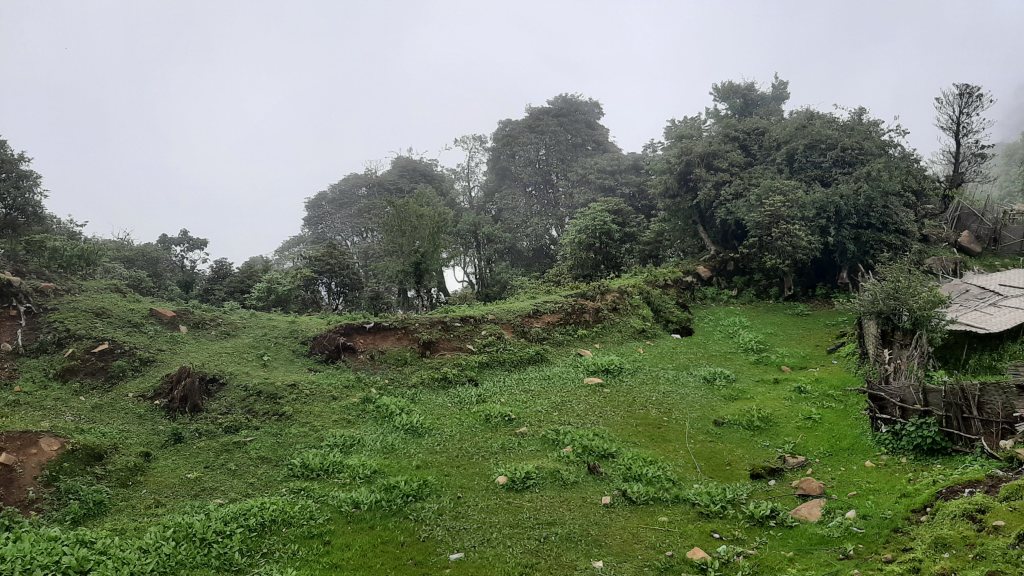
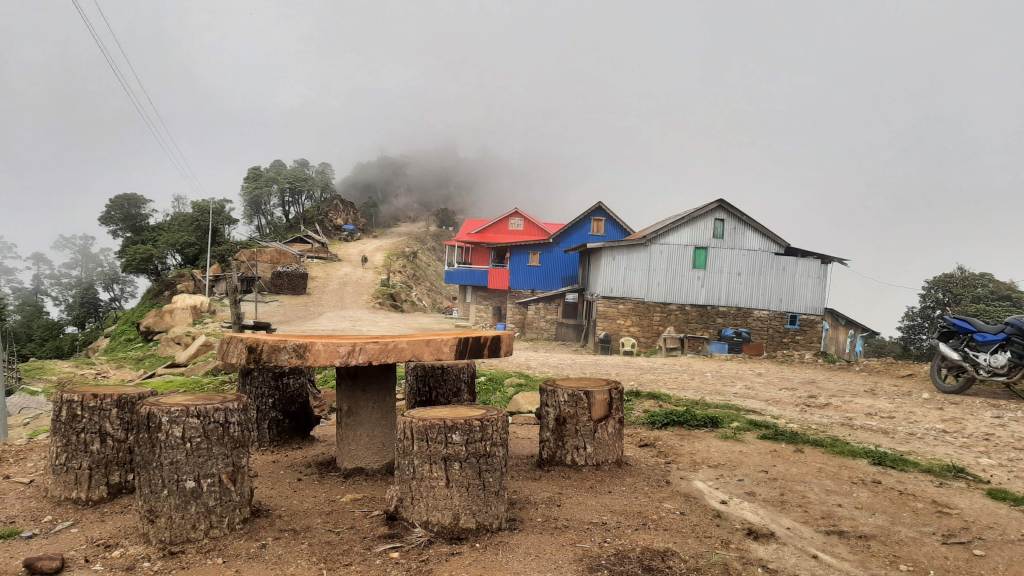
उहिले पाँच वटा पोखरी भएको ठाउँमा अहिले बाख्रा गोठ। पाँच पोखरीमा चिया पिउन विश्राम गर्ने काठे चौतारी।
पाचँ पोखरीदेखि (२:३५) बाटो अप्ठ्यारो भएकोले लाजे आफैले गाडी हाँक्ने भयो। ओहो! ओर्हालो बाटो त असारे पानीले छापेको ग्राभेल सबै बगाएर नाङ्गो ढुङ्गा देखिने अनि वीचमा कुलो बगेर खाल्टै खाल्टा।त्यस माथि बाक्लो हुस्सु लागेर भिजिविलिटी सायद १० मिटरभन्दा कम थियो।यता उता चक्का अडिने सडक खण्ड खोज्दै गाडी अगाडि बढी रह्यो।ओरालो घुम्तिमा त गाडी उफ्रिएर एकै चोटी तल पुगिएला झैं लाग्ने अनि थोरै घल्च्याक्क गर्यो की मुटु त मुखबाट वाहिर फुत्त निस्केला झैं हुने आफ्नो चैं। त्यो ओरालो खासै हिड्दा पनि त्यति लामो समय लाग्ने त हैन। सम्झना भएसम्म हामी माथि डाँडाबाट उ तल फेदि भनेर हेर्दै हिडेको याद छ । तर गाडीमा गुड्दा पनि कहिले त्यो ओरालो सकिए जस्तो नलागेर हैरान। शरण भने पछाडि सिटमा मस्तले सुतेरै बाटो काट्यो। उसको निस्फिक्रीपन प्रति डाहा पनि जाग्यो अलिकति।बल्ल तल्ल २० मिनटमा फेदी (२:५५) पुगियो र अब त अप्ठ्यारो सडक खण्ड सकियो भनेर लामो सास तानियो।
तेर्सो बाटो त आयो, तर धान रोप्न हिल्याएको खेतभन्दा पनि हिलाम्मे।सडकको छेउ छेउ थोरै सुक्खा जमिनको साहारामा कछुवा तालमा गाडी गुडी रह्यो हामीलाई गन्तव्य पुर्याउन। चौकी (३:१७) हुँदै मंगलबारे पार गर्दासम्म पनि बाटो हिलै हिलो र हुस्सु बाक्लिएकोले मनमा ‘यस्तै बाटो हो भने त पुगिन्न की’ जस्तो अनि ‘किन यो झरीको मौसममा गुफा पोखरी जाने रहर पलाएको होला’ भनेर आफैलाई धिक्कार्ने अवस्था नआएको पनि होइन।मंगलबारे पुग्न थोरै अगाडि एकदमै कलात्मक लेखन शैलीमा “गाठ The Hotel” लेखिएको साइन वोर्ड देखेर के रहेछ भनेर माथि डाँडाको थुम्कोतिर नजर डुलाउँदा चित्राले बनाएको गोठ देखियो। नयाँ सोचका साथ नयाँ होटल खोलिएको रहेछ तर मर्मतको लागि बन्द थियो।
सडकको अवस्था अझै नसुध्रिएको देखेर मेरोमात्र नभई पछिल्लो सिटमा शान्तले यात्रा गरी रहेको मिङ्शोको पनि मन आत्तिन थालेछ, एक जोडी पैदल यात्री देख्ना साथ झ्यालबाट टाउको निकालेर गुफा पुग्ने बाँकी सडक खण्ड कस्तो छ भनेर सोधे। “खासै हिलो छैन, सजिलै पुग्नु हुन्छ” भनेसी मात्र मन ढुक्क भयो। हुन पनि करिव ५ मिनटको बाटो पार गरेसी त गाडी सजिलै गुड्न थाल्यो र लाम पोखरी (४:१७) पुगियो। लाम पोखरीमा पानी देखेर मन फुरुङ्ग भो (२०१७ मा चैत्रको पहिलो हप्ता लाम पोखरी सुक्खा थियो)। ठिक त्यति नै बेला घामले पनि झुलुक्क बादलको पल्ला हटाएर हामीलाई चिहाए जस्तो गर्यो। यस्तो दुःख गरेर यहाँसम्म आए पछि २-४ थान फोटो त लिनै पर्यो।
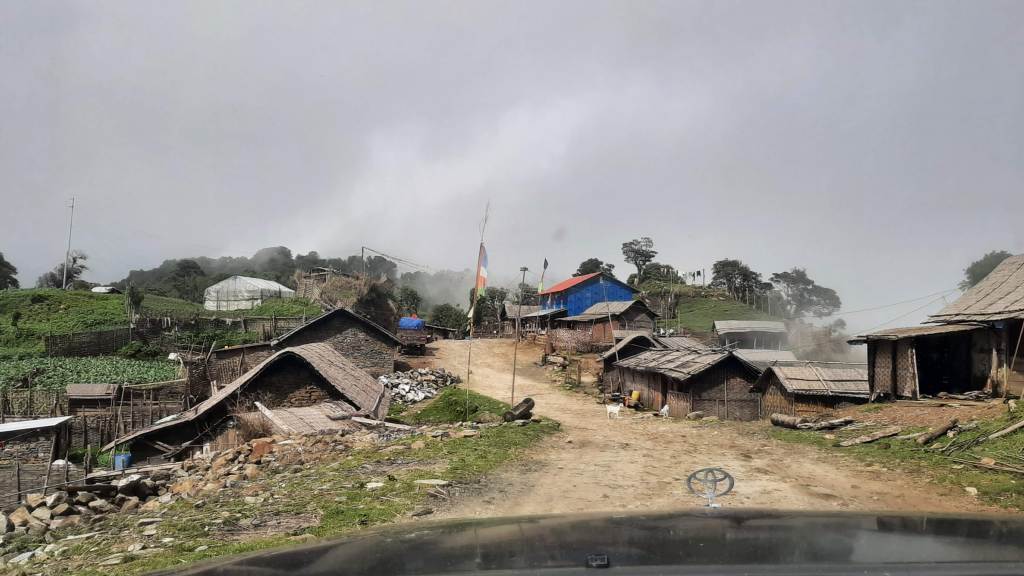
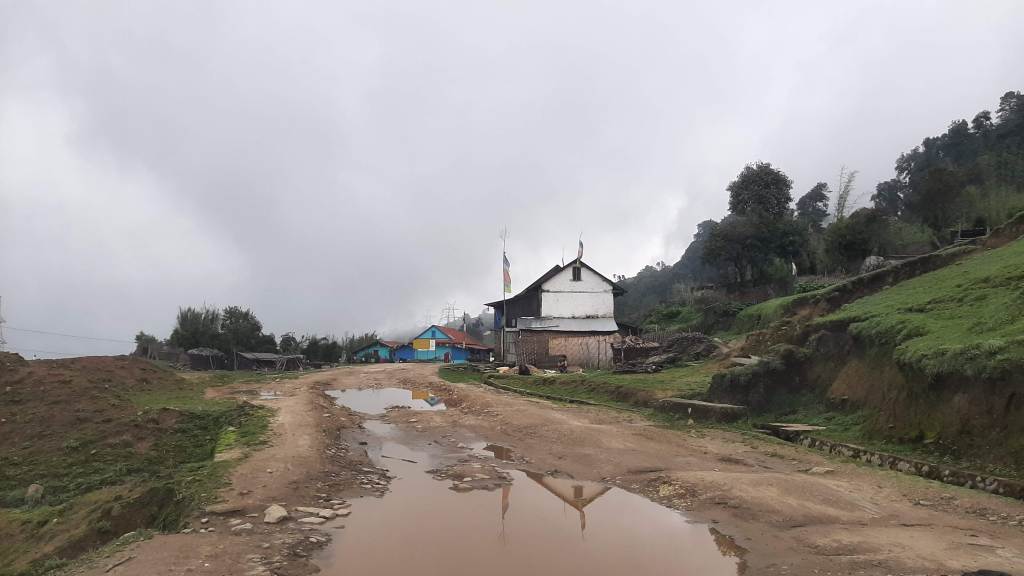


फेदि, चौकी पुग्न अगाडी र चौकी र लाम पोखरी (हेर्दा सानो देखिएता पनि पोखरी निकै लामो भएकोले नै नाम लाम पोखरी रहेको हो)
लाम पोखरी पछिको सडक खण्ड भने सजिलै थियो र आराम साथ गुफा पोखरी पुग्यौं (४:३३)। ठ्याक्कै गुफा पोखरी पुग्दा घामले फेरि पनि दर्शन दियो।मलाई त याक होटलमा बस्न मन थियो तर गाडी राख्ने सुविधा नभएकोले मकालु होटलमा बस्ने निधो गरियो।
साहुजी (८२ वर्ष), साहुनी अनि सह-साहुनी (कान्छी छोरी) सबै वोलक्कड रहेछन्।अट्याच बाथरुम हामीकाँ मात्रै छ, यतै वस्नुस् भनेर लोभ्याए (२०१७ मा याक होटलमा बसेको थिएं।सुत्ने कक्ष माथि तला र वाथरुम मुनि तला त्यो पनि वाहिरपट्टि भएकोले रातमा अलि असुविधा महसुस भएको पनि हो)।एकछिन गफिन्दा गफिन्दै वस्ति र पोखरी हुस्सुले ड्याम्मै छोप्यो।अरु गफमा मस्त रहेको बेला म भने सुटुक्क वस्ति घुम्न निस्किएँ। गुफा पोखरीमा मलाई थाहा भएसम्म होटल व्यवसायीहरुमा सेर्पाहरुको वाहुल्यता थियो। आजकल भने सबै जात जातीका (क्षेत्री/शेर्पा/लिम्बू) व्यवसायीहरु थपिएको रहेछ।याक होटलमा मुढे अचानोमा तीन तले सुँगुरको मासु काटेको देख्दा यतै पो बस्नु पर्ने थिएछ जस्तो नलागेको भने होइन 😛 ।वस्तिको पल्लो छेउमा भने ताप्लेजुङ्गे शेर्पेनी दिदीको होटल रहेछ। एक छिन गफ गरें।
होटल आइपुग्दा साहुनीले हाम्रा लोकल कुखुरा साह्रै मिठो छ, काटेर तरकारी बनाउँ है भनेर अप्रत्यक्ष रुपमा दवाव डाल्दै थिन्। अब क्षेत्रीको होटलमा सुँगुरको मासु पकाउनु भन्न त भएन भनेर हस् भनियो। तोङ्बा पनि छ, याकको सुकुटी पनि छ बनाउँ भनेर कान्छी छोरीले थपिन्।शरण र मैले चिया र सुकुटी खायौं। लाजे र मिङ्शोले तोङ्बासँग खाए। साहुजी तँहाको स्थानीय भएकोले हामीले सानोमा सुनेको फेदी, चौकी र मंगलबारेबारे कथनहरु सोधें। कारण सानोमा हामी बसन्तपूरबाट फेदी, चौकी र मंगलबारेमा कहिले बास बस्दैन थियौं।टर्च बालेर भए पनि गुफा पोखरी नै बास बस्न पुग्थ्यौं।
फेदीमा खाना खाए कपेट (पेट दुख्ने रोग) लाग्छ भन्थे (आजकल सम्झँदा सायद दुषित पानीका कारण हुने रोग हो की जस्तो लाग्ने)।
चौकीमा विदेशबाट छुट्टीमा आएका लाहुरेहरुलाई लैना (आउँदै गरेका)लाई लुट्छन् भन्थे। थारो भनेर छुट्टी सकाएर फर्कँदै गरेका लाहुरेलाई इंगित गर्थे रे।
मंगलबारेमा चैं सम्पतिको लागि बटुवालाई मारेको भन्ने हल्ला थियो।
साहुजी बाले पनि होमा हो मिलाएर सोही कथन दोहोर्याउनु भयो र उमेरमा लुटेरा समातेको कथा पनि थप सुनाउनु भयो।
अनि फेरि अनुज घिमिरेले TMJ क्षेत्रमा पाइने रुख विरुवाहरुको नाम सोधेकोले उही साहुजीलाई बाटाँ देख्या रुख विरुवाको वर्णन गरेर सोधियो तर बुढा बाले पनि खासै ती रुख विरुवा पहिचान गर्न सक्नु भएन। सायद मैले वर्णन गर्न नजानेर पो हो की भन्ने पर्यो। सँगै बस्ने अर्की शेर्पेनी दिदीसँग मिलेर उहाँले भन्नु भएको रुख विरुवाहरुको भेटेसम्म वैज्ञानिक नाम रुजु गरेर यहाँ पेश गरेः
गुराँस (Rhododendron spp.),
असारे (Viburnum erubescens Wall. ex DC.),
लेकको जंगली दारिम, चत्रो (Berberis asiatica Roxb. ex DC),
पातले कटुस (Castanopsis hystrix Hook. f. & Thomson ex A.DC.)
लेकको कटुस (Corylus ferox Wall.),
सिलटिमूर (Lindera neesiana (Wall. ex Nees) Kurz),
जंगली ठेकी फल (Actinidia callosa Lindl.),
अँगेरी (Lyonia ovalifolia ( Wall.) Drude) आदि।
खाना चैं खासै टेस परेन मलाई होटलको। भातभन्दा तरकारी धेरै चाहिने मलाई त …. पूरै थकाली थाली पाराले पितिक्क पितिक्क तरकारी राखेको एक गाँस मै सकिने।थपी मागेको त साहुनी तरकारी महँगो छ रे। होटल चलाए पछि पैसो लिए पछि ग्राहकको चित्त बुझ्दो खाना त खुवाउन पर्यो नी हाउ 😦 । लोकल कुखुराको स्वाद पनि गफै रहेछ खासै चखिलो लागेन।(धेरै होटलवालाको सोच मासु भात भए पछि हरियो परियो तरकारी चाहिन्न भन्ने हुने रहेछ जुन म प्राय फिल्ड जाँदा भोग्ने गर्छु।)
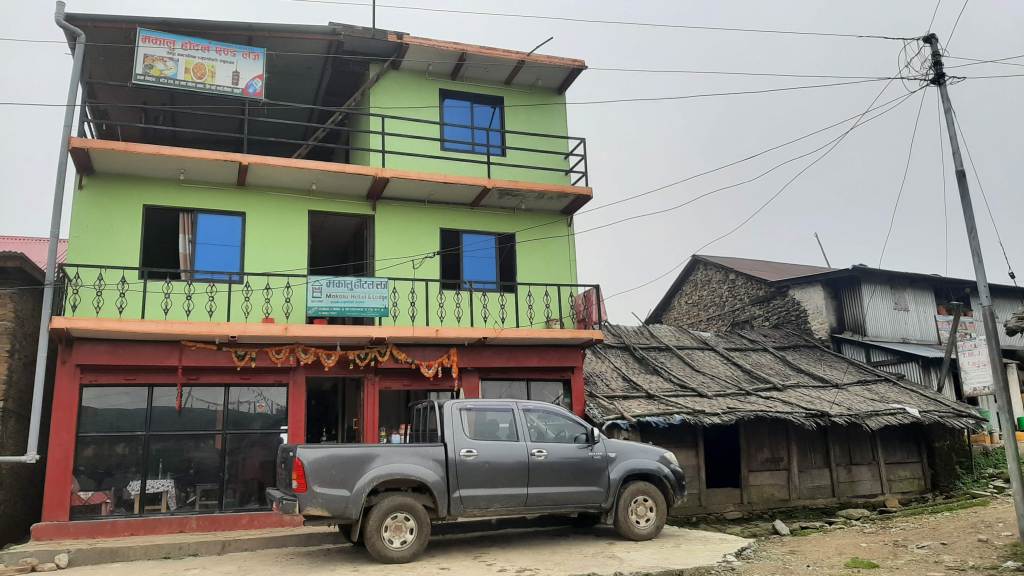

गुफा पोखरी स्थित सुविधा सम्पन्न होटल मकालु र गुफा पोखरी वस्ति।
रातभर पानी परी रह्यो अनि हावाले शिशा फुटेको झ्यालमा टाँगेको प्लाष्टिक झट्कारी रह्यो। त्यो झट्काईले रातको सुन्यतालाई जिस्काई रह्यो र यात्रीको निन्द्रा विच्की रह्यो।पानीको निरन्तर झरेको र्तप्काई सुन्दा भोलि फर्कँदा त सडक द्मनै हिलाम्मे भर गाडी फस्ने पो हो की भन्ने पीरले घरि घरि ऐठान नलागेको पनि होइन 😦 । विहान सवेरै उठेर बाहिर हेरेको त पोखरी खुलेको रहेछ। झोला प्याक गरेर तल विल तिरिञ्जेलमा फेरि कुहिरोले सप्को मार्न भ्याई सकेछ पोखरी। त्यही पनि गर एक फन्को मार्न पर्यो भनेर गा, आधा चक्कर लगाउँन नपाई छ्याङ्ग खुल्यो। लौ त मौका यही हो भनेर रहर लागे जति फोटो खिचियो। पोखरीमा धार्नी तौलका माछा पनि रहेछन्, बेला बेला चारो माग्न निस्कने। हिउँदमा पानीको तह घट्दा यी माछा कता जान्छन् होला भनेर एक झमक सोचमग्न भइयो 😀

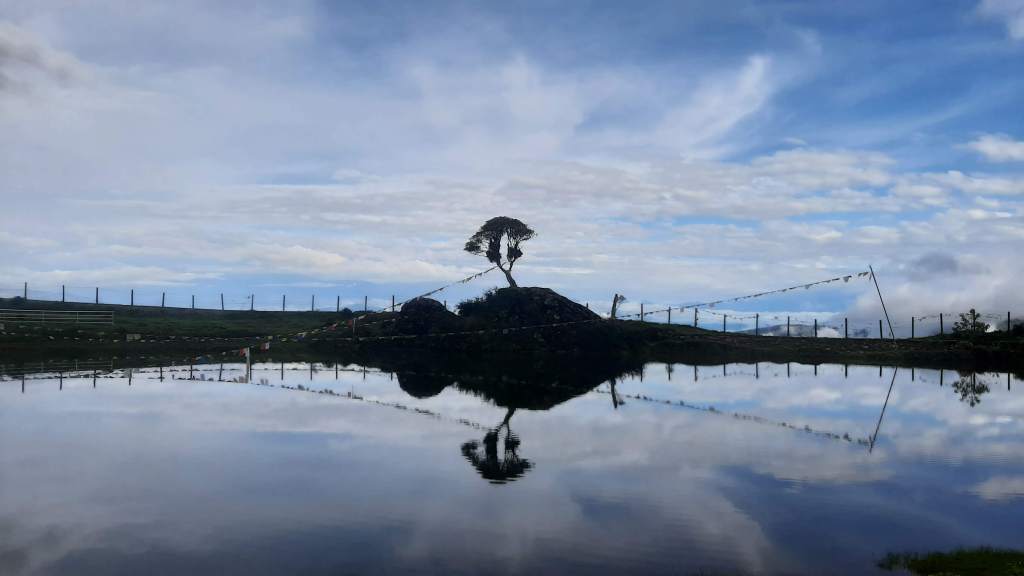
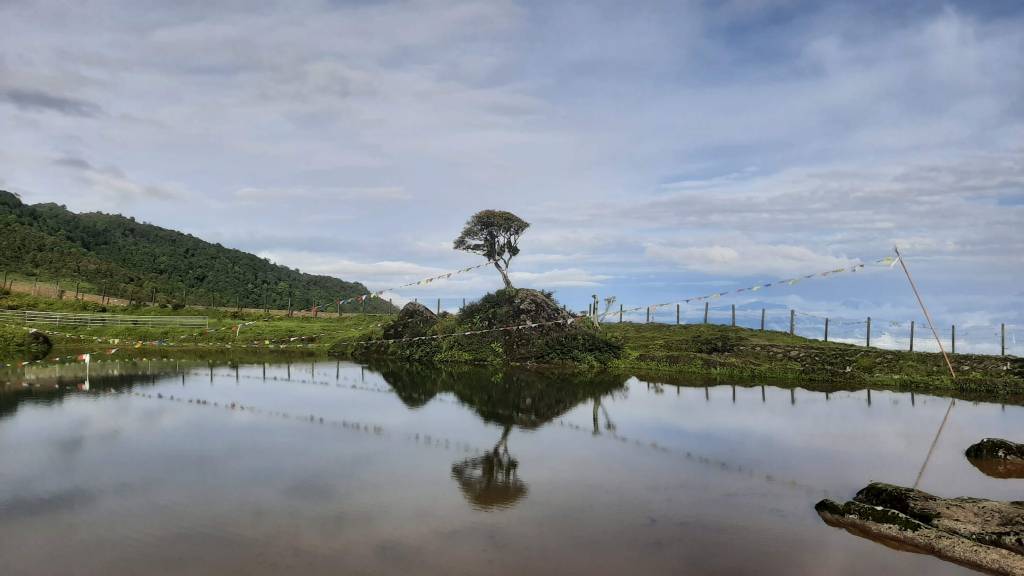

१५ मिनटको अन्तरमा खिचिएका गुफा पोखरीका तस्विरहरु
(हुस्सुले ढाकियो भनेर हरेस नखानु, पर्खिने धैर्यता भए पोखरी खुल्ने सम्भावना रहन्छ 😛 )
गुफा पोखरी एक फन्को लगाएसी अलि पर ताप्लेजुङ जिल्ला मैवाखोला गाउँ पालिकाको सिमानासम्म पुगेर फर्कने सल्लाह भयो। कलेज पढ्दाको समय दाइ भारतबाट छुट्टीमा धरान आएको बेला दाजु-बहिनी दुई जनामात्र यस्तै वर्खाको समय घर जाँदा गुफा पोखरीबाट दाहिने सानो करेङ परेको उकालो गोरेटो पछ्याउँनु पर्नेमा बाटो विराएर देब्रे ठूलो बाटो पछ्याएर जाँदा मैवाखोलाको साँगु-ढुंगेसाँघु हुँदै एक घण्टा बढी समय लगाएर दोभान झरेको याद ताजा भएर आयो।जहाँ एक जना गोठालो बा भेटेर हामीले दोभान झर्ने बाटो सोधेका थियौं त्यहाँ अहिले बढेमाको साइनवोर्ड टाँगिएको रहेछ। त्यही साइनवोर्डमै औंलाहरुको सहारामै भए पनि ताप्लेजुङको सबै गाउँ र नगर पालिकाहरु फन्को मारियो 😉 रमिते डाँडाको टुप्पो चढेर आफ्नो जिल्ला पर-परसम्म आँखाले भ्याएसम्म हेरी चित्त बुझाइयो। दाँया कञ्चनजङ्घा र फोक्ताङ्लुङ्मा हिमालदेखि बाँया मकालुसम्मको हिमालहरु बादलसँग लुकामारी खेलेको दृश्य मन भरी कैद गरेर फर्कियौं।
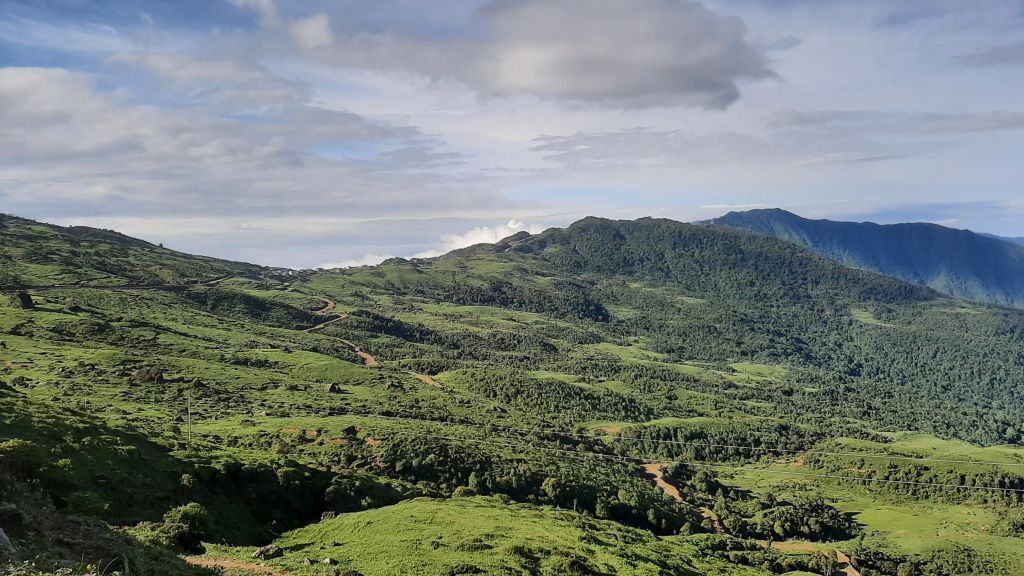
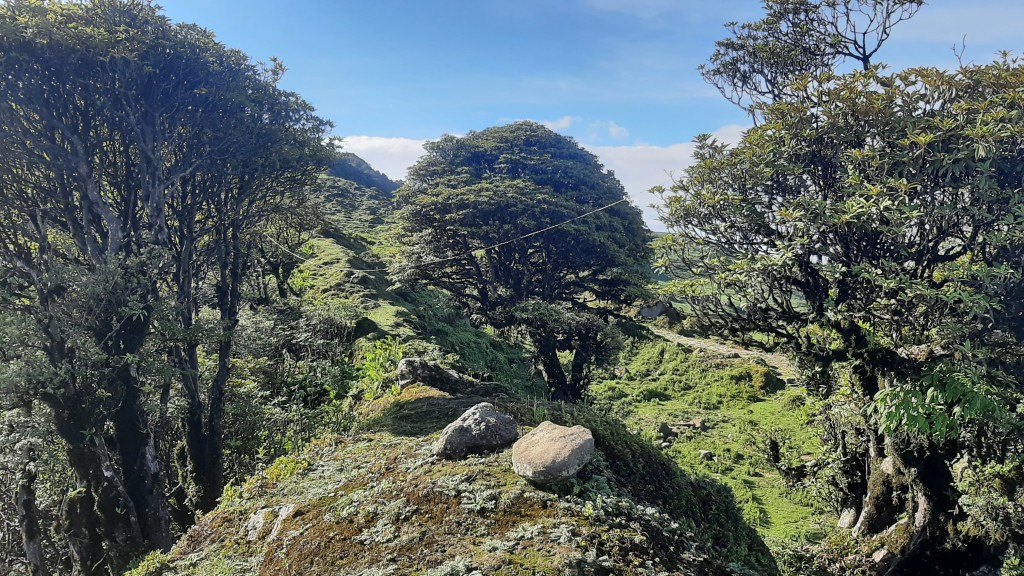



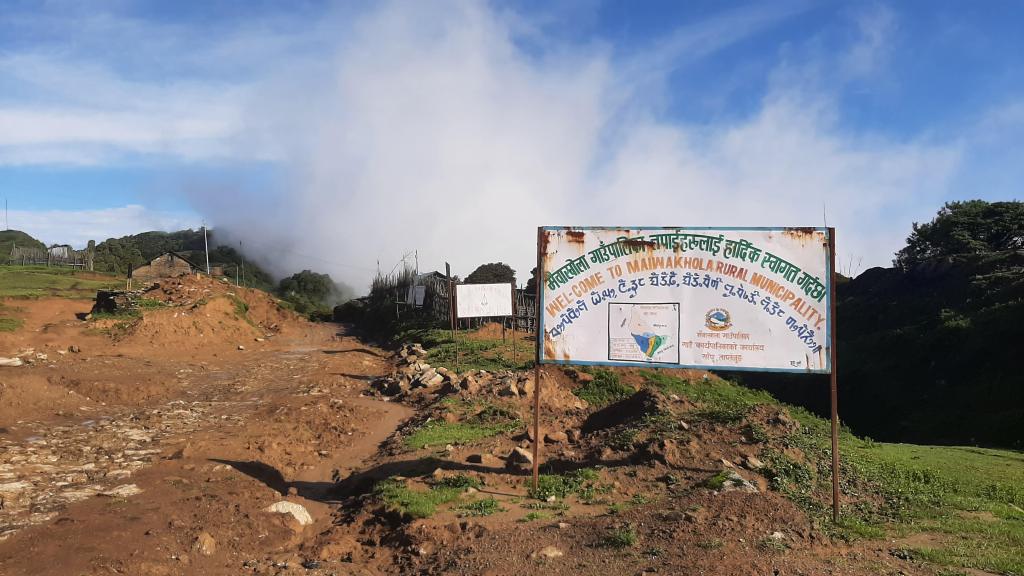
नुनढाकी जाने सडक खण्ड, रमिते डाँडाबाट देखिने दृश्यहरु (संखुवासभा तर्फः मकालु र ताप्लेजुङ तर्फः फक्ताङ्लुङ्मा), ताप्लेजुङ सिमाना मैवाखोला गा.पा.को साइनवोर्ड।
फर्कँदा शरणले गाडी हाँक्यो र करिव साढे एक घण्टामा सजिलै पाँच पोखरी निकाल्यो।चिया पिउन बसेको बेला लाजे र शरण वीचको वार्तालापः
लाजेः तिमीले त अप्ठ्यारोमा पर्दा दुई नम्बर गियरमा गाडी चलायौ, किन एक नम्बरमा नहालेको?
शरणः एक नम्बरमा त चक्का बढी घुमेर हिलोमा गाडी फस्ने सम्भावना बढी हुन्छ र खाल्डोबाट गाडी उकास्न सक्दैन तर दुई नम्बरमा प्राय गाडी फस्दैन र अप्ठ्यारोबाट सजिलै गाडी उक्सिन्छ।
लाजेः गाडी चलाएको दशक बढी भो तर मलाई यस्तो जानकारी थिएन। गाडी अप्ठ्यारोमा फस्यो की एक नम्बर गियरले मात्र उक्सन्छ जस्तो लाग्थ्यो।
मः हो की क्या हो? हिजो तिमीले चलाएको बेला गाडीले सकस गरी आवाज निकाले जस्तो महसुस भाथ्यो तर आज एक पटक पनि त्यस्तो आवाज सुनिन ….
शरण एक छिन आफ्नो कौशलताको प्रशंसामा गजक्क फुल्यो।
आर आर गार्डेनको माथिल्लो गेट डुँडपानी पुगेसी लाजे र म निस्किएर गार्डेनभित्र रामायण र महाभारतको कथनको भौतिक अवशेषहरु पछ्याउने रहर गर्यौं (ताप्लेजुङ उत्तर पश्चिम तर्फका गाउँलेहरु प्राय इलामबाट गाडी चल्न थाले पनि यहि बाटो हिडेर धरान-ताप्लेजुङ गर्न रुचाउँथे र नजिक पनि पर्थ्यो। त्यसैले प्राय यो बाटो हिडेकाहरुलाई यो डुँडपानीको जङ्गलमा भएका ढुँगाहरुसँग गाँसिएका कथनहरु सुनेरै हुर्किएका हुनाले पूनरताजिकी गर्ने रहर स्वत जाग्ने रछ यहाँ पुग्दा)। पहिले हिड्ने गरेको गोरेटो र हाल पार्कभित्र टाइल छापेर बनाइएका पथहरु सायद फरक भएर हो की ति पैतला अंकित ढुङ्गाहरु पहिल्याउन निकै कठिन पर्यो हामीलाई।युधिष्ठिरको पुस्तकहरुको थाक भने कतै भेट्न सकिएन।पाण्डवहरुले हानेको पक्लुङ (छेलो) पनि ठम्याउन मुस्किल मुस्किल पर्ने रछ। पहिले त बढेमाको थियो जस्तो लाग्छ भिमले हानेको पक्लुङ। मलाई याद छ त्यो ढुंगोमाथि चढेर फोटो खिच्नको लागि तलबाट ठेल्न पर्थ्यो। भाइ-म-सानीमा चढेका थियौं। फुपू भने चढ्न नसकेर तल फेदमै उभिएर फोटो खिचेका थियौं।
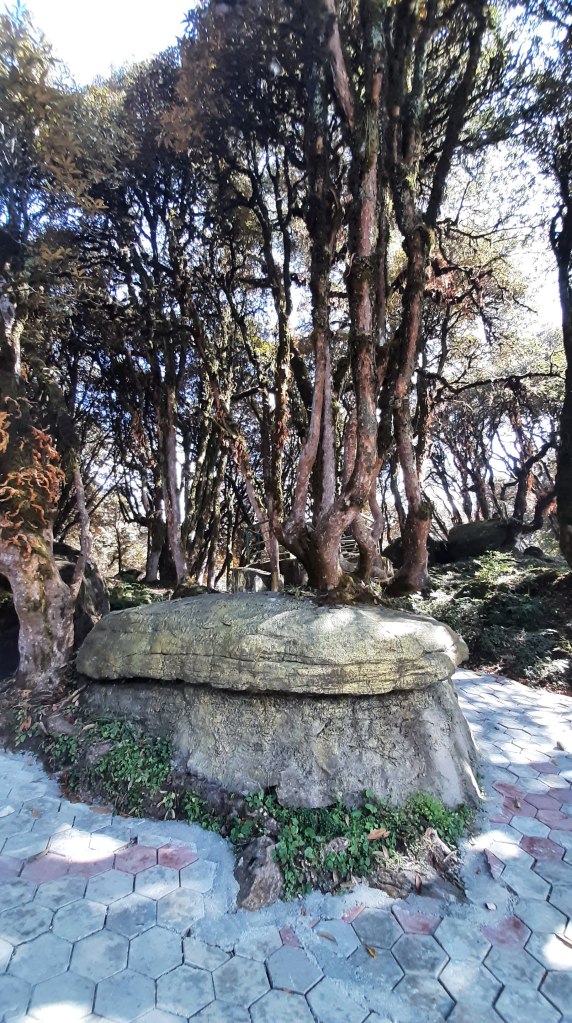

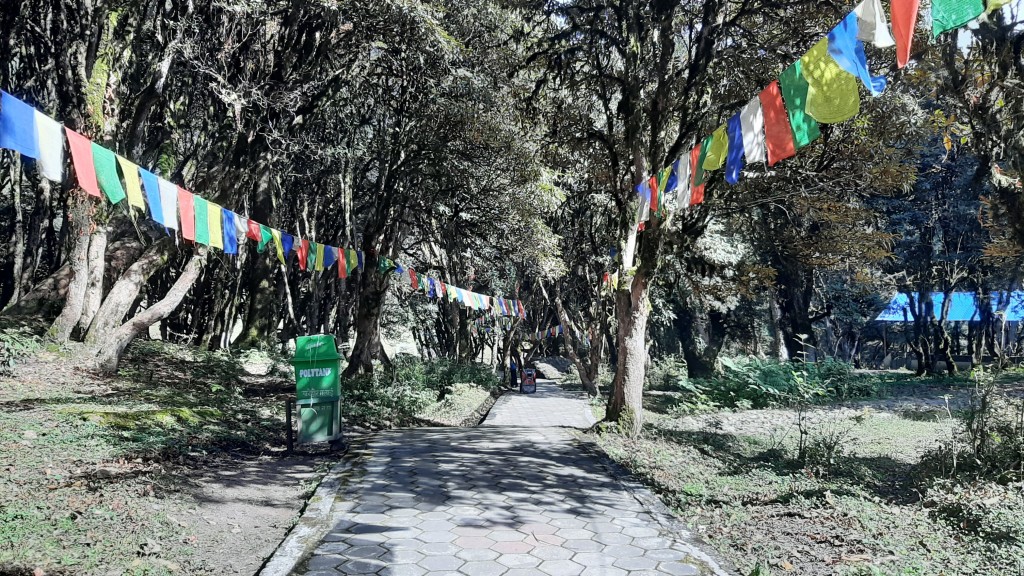
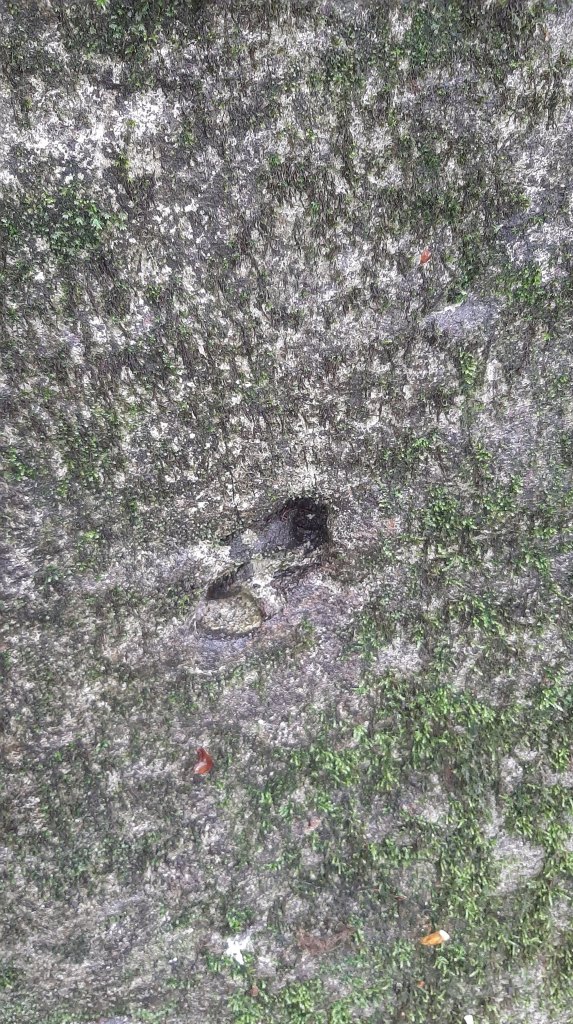
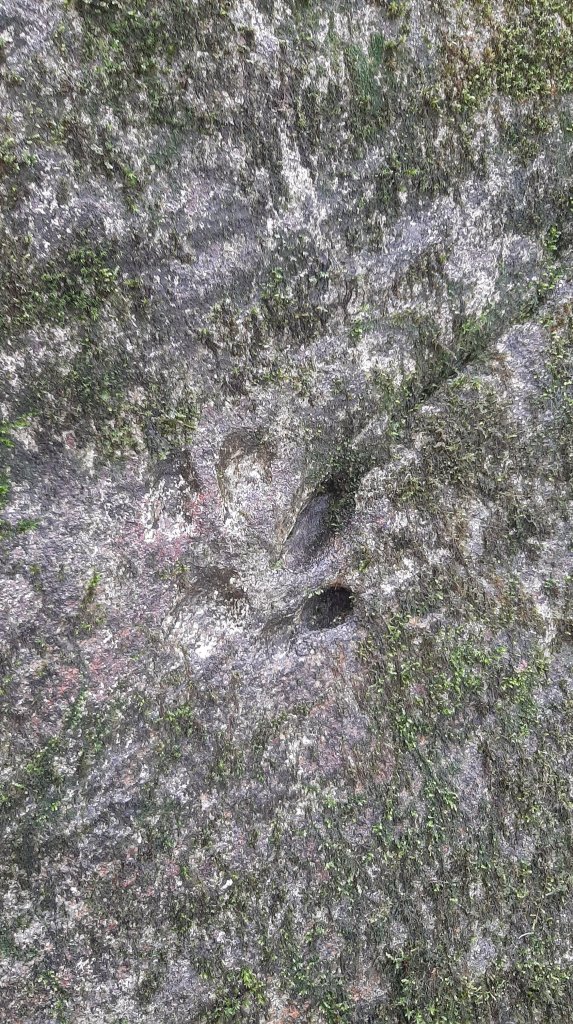
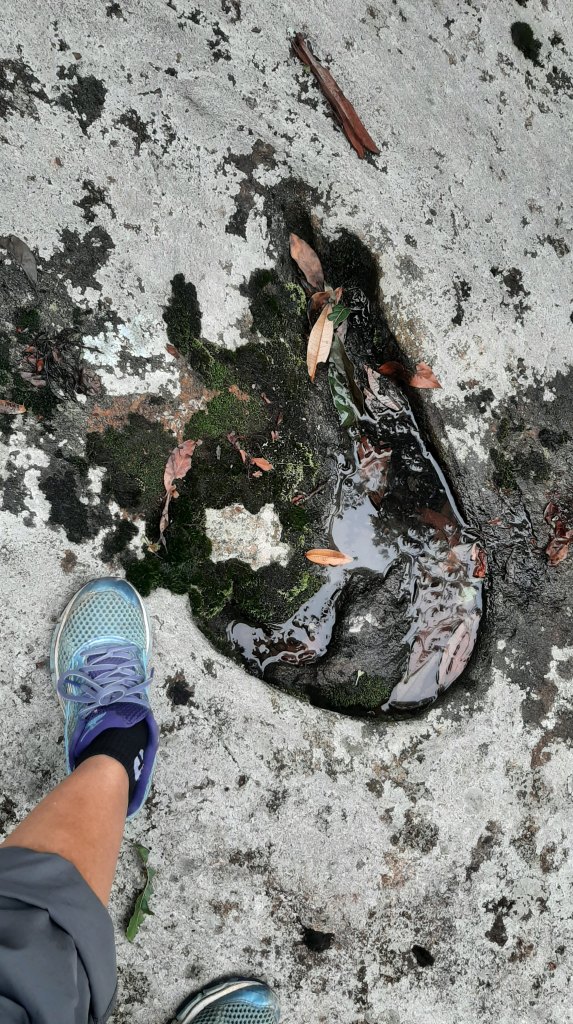
आर आर गार्डेनभित्र रहेका छेलो हानिएका ढुंगाहरु र मृग, कुकुर र मानिसका पद्चापहरु।
बसन्तपूर याक होटलमा फाक्शासँग विहानको खाना खाएर गुफा पोखरी यात्राको विट मारियो। यो यात्राबाट मैले सिकेको पाठः
- बर्खाको बेला कच्ची सडक यात्रामा सवारी साधन भए पनि सकेसम्म ननिस्कने।हुस्सुले अगाडि पछाडि केहि नदेख्दा दुर्घटना हुने सम्भावना बढी हुने हुँदा हिँडेर यात्रा गर्नु व्यावहारिक माने।
- स्थानीयहरुले लोकल गाडी चलेको छैन भन्दा भन्दै आँट गरेर यात्रा नगर्ने। फसेको गाडी मान्छेको आँटले अप्ठ्यारोबाट उक्सदैन।वीचमा गाडी विग्रियो भने मर्मत गर्न वा तान्न/ठेल्नलाई कोही नभेटिने।
तर यति भन्दा भन्दै पनि फेरि कसैले गुफा पोखरी बर्खाको बेला जाउँ भने नाई भने भनिन्न तर हिडेर जाउँ भनेर सुझाव भने अवश्य दिइन्छ 😀
लिम्बू परिकारहरुबारे थोरै जानकारीः




पूर्व जाँदा चाख्नै पर्नै केही लिम्बू परिकारहरुः सार्गेम्बा (सुँगुरको आन्द्रामा याङ्बेन (Edible lichens)+भित्र्याँस+रगत+किमा मासु भरेर बनाइने ससेज), याङ्बेन-भित्र्याँस र वाचिपा/वाम्युक/तिते (लोकल कुखुराको प्वाँख उखेलेर पोले पछि बाँकी रहेको follicles + खुट्टा+टाउको+घाँटी+पखेटा+जाँते आदि मसिनो गरी किमा जस्तै पारेर परपरी भुटेको परिकार हो। थोरै हुने हुँदा भिजाएको चामल वा पाकेको भात पनि हाल्ने गरेको पाइन्छ र कति ठाउँमा सूप हालेर समेत खाने चलन छ )
छोटो लेख्छु भन्दा भन्दै गफाडीको गफ लामै भएछ 😉



